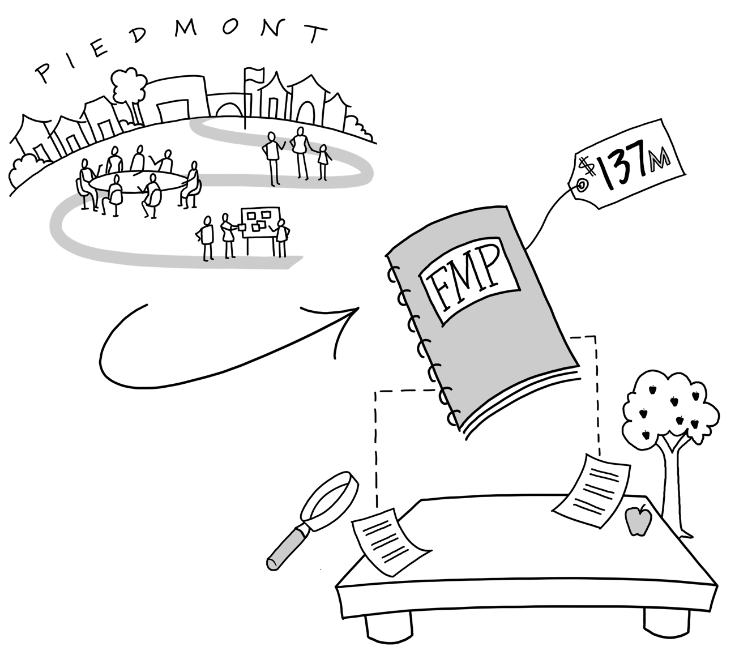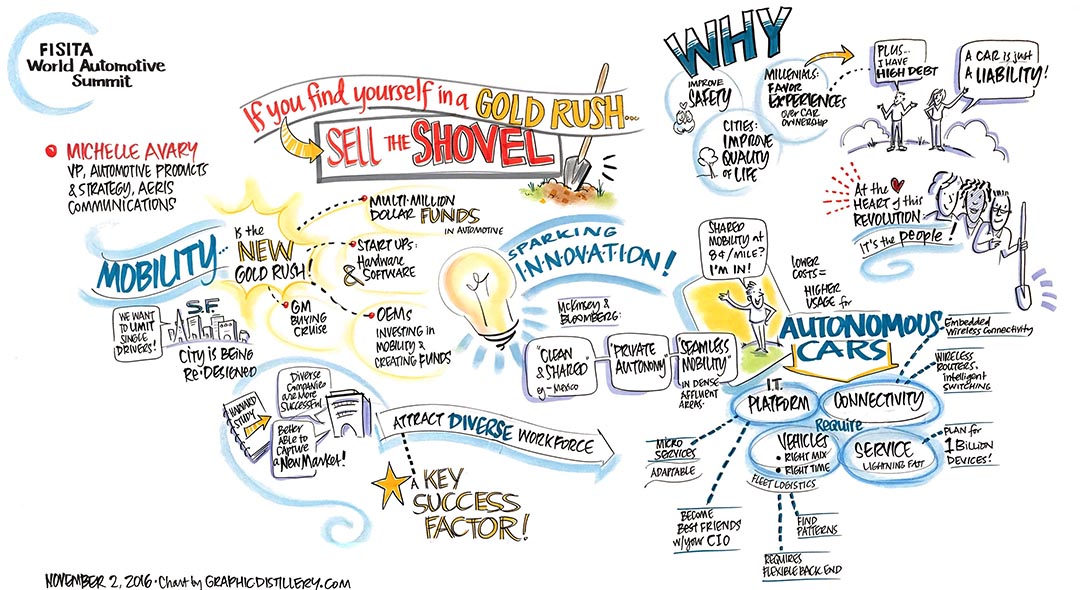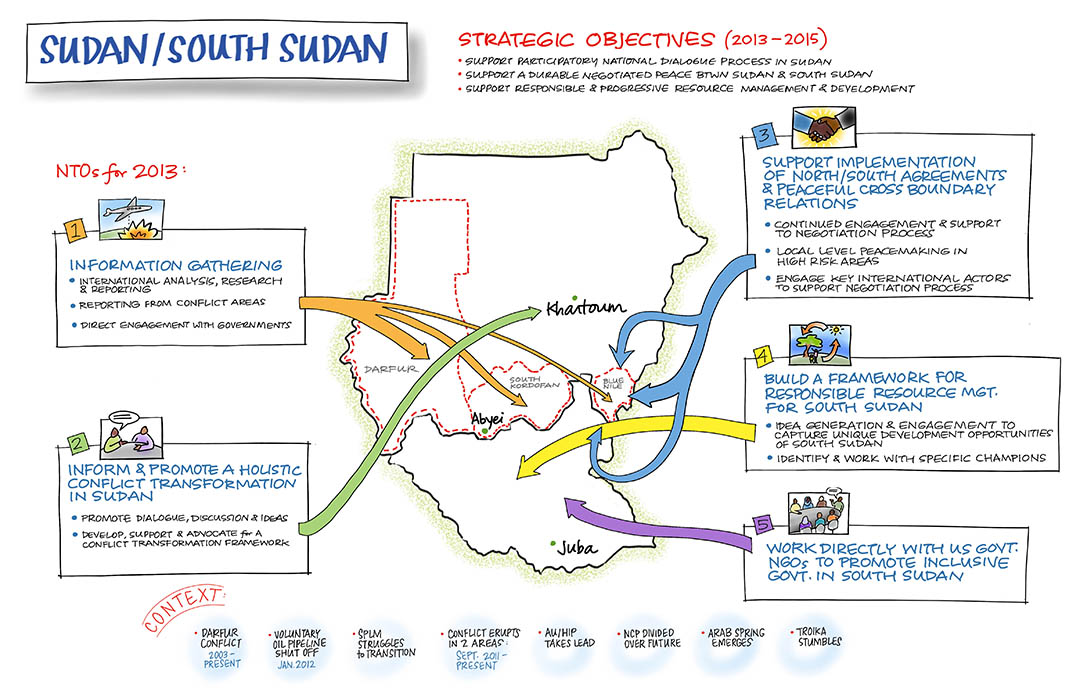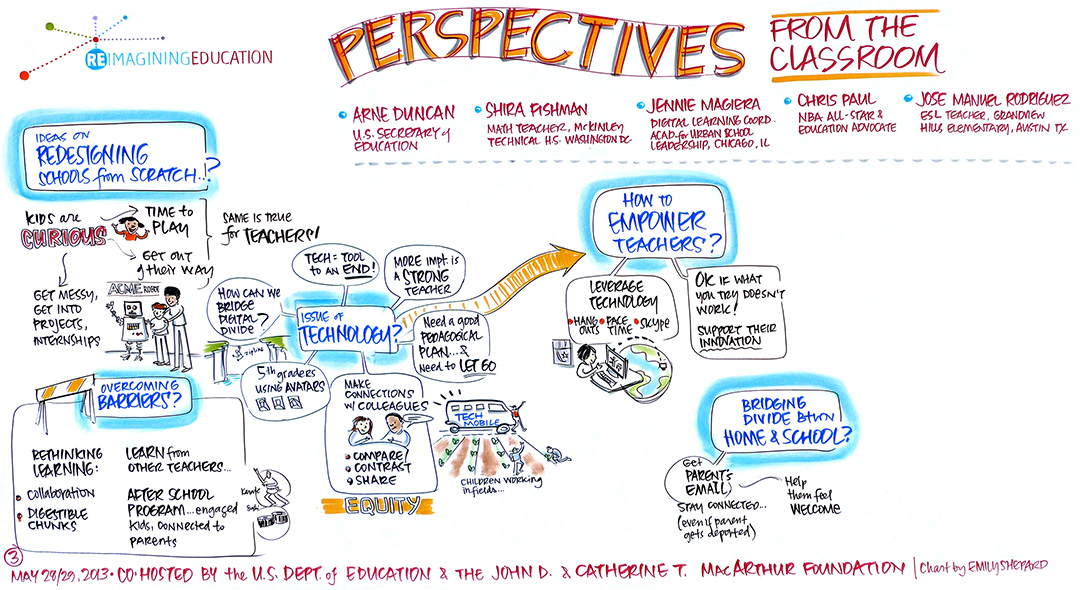So you think you can’t draw? Think again!
It’s not uncommon that people come up to me at the end of a job and comment on the visual charts I’ve created. “Wow, you really have an artistic talent – quite a gift,” they say, sometimes followed by, “I can’t even draw a straight line!”
I appreciate the compliment, but I always find myself wanting to address the underlying assumption – that drawing skills are only in the realm of talent, rather than techniques that anyone can learn!
With less art being included in U.S. school curriculum, fewer people are exposed to learning how to draw, which means that drawing as an act gets shrouded in mystery. This leads to the assumption that drawing is a “gift,” which some people have, and others don’t.
If art classes were more common in school, people would find that drawing is like any other skill: it can be broken down into components and taught. In a studio art drawing class, there is instruction on what to look for, and multiple techniques on how to draw what you see.
In contrast, it’s assumed that even if a person isn’t particularly inspired by math in school (that would be me!) he or she would eventually make it through the various levels of math classes. Sure, some students may be adept, even brilliant mathematically, but nevertheless everyone learns math in school.
It’s a given that math is a tool that has many applications, and is also a way of thinking. The same is true for drawing. Everyone can learn to draw, and some people may choose to take that skill and use it in service of fine art, architecture, illustration, or as a tool to aid thinking and build clarity, either for oneself or with groups.
So – let’s get rid of the story that being able to draw is a “gift” that only some are given! If you are interested in learning to think visually, and draw simple images, here are three things that can help you move forward:
1. Make it Simple!
Drawings for visual thinking are simple and symbolic: images that can quickly and clearly communicate a concept. The power is less in the pen and more in the brain’s ability to make connections and interpret information. For example, here are 5 quick drawings:
A birthday cake, a stressed person, a happy person, a city, and a romantic dinner for two. (Hmm, this could be a short story in the making!)
Now take a step back from the content of these images, and see if you can deconstruct how these drawings are made. What are their component pieces? Circles, ellipses, straight lines, curved lines…that’s about it!
And hey wait, that table in #5 looks suspiciously like the cake in #1, reminding us that the context is key (and it doesn’t take much to create the context!)
2. Have an Open Attitude!
It’s my hope that once you know that drawing is a learnable skill, you will approach it with an attitude of positivity and openness. I know it’s easy to fall into “I can’t do this!” mode when you feel uncomfortable. I totally get it – that’s my default mode too, when I struggle with areas that stress me, like technology.
Being mindful, slowing down, and giving yourself positive self-talk every step of the way can help keep your attitude open. Check out the book, Mindset by Dr. Carol Dweck, about cultivating a growth mindset to develop your abilities. And if all else fails, see if you can find the humor in it, and loosen up with laughter.
3. Keep at it!
We’re so used to being accomplished in our fields, it’s humbling to work on learning a new skill. We know what we want the drawings to look like, and it can be disheartening when we don’t see progress immediately.
Drawing for visual thinking is a lot like learning to draw the alphabet and your numbers as a kid. Through repetition, you can get these simple shapes and symbols into your muscle memory, and after awhile you don’t have to think about the “how to.”
Look back at the component pieces of the five drawings above. You could practice the circles, ellipses, straight lines, curved lines, and even the shape of the buildings that look somewhat like the number 7. Copying is a great way to learn – grab a stack of scrap paper and have at it!
Click here for a wonderful quote from Ira Glass in which he talks about the importance of focusing on quantity over quality when you are getting started.
By the way – If you’re interested in learning how to draw realistic portraits, that too is completely doable. Betty Edwards, in her book and workshop, Drawing on the Right Side of the Brain, showed that people with no prior art skill could learn to draw lifelike people by having clear instruction, and by tapping into the visual/spatial side of their brains. You can see examples of before and after student drawings here.
No more thinking that drawing is just for other people – grab your favorite pen, pencil or marker, and get started!























































Emily, I love the way you write like people talk … and think, too. You take your deep understanding and wisdom and turn it into text/pictures that are approachable and friendly. Like having a down-to-earth mentor at my side. You are AWESOME, girlfriend.
Another gift from Emily Shepard ! your generosity.
Thank you for sharing this blog post. It’s in keeping with
your approach to graphic facilitation and that’s why
we enjoy working with you!
Brilliant blog ! i’m considering the DRSB workshop in 1440 in Feb!
hope you’re well.
xo,
camille
Thanks Emily. Really helpful, practical, thought provoking, and inspiring. Appreciate the simple, attainable approach.
Beautiful Emily. Thank you so much!!!
oh, this was so much fun to read the blogs. I, too, see faces everywhere — especially in the nubbed rug in front of the toilet. and you make me feel confident that I could draw. thanks for being to upbeat and affirming!